Enlighten your concepts with Bowspring!
An Interview with Desi Springer and John Friend
The founders of the Bowspring method, Desi Springer and John Friend talk in this interview about innovative curviness, their inspiration and the challenges they faced (and still do face).

When I practised Bowspring for the first time with Desi and John during a workshop in Granada I couldn’t help but wonder: What is this magical practice called Bowspring? It is so different, yet so profound and effective. But why? I went straight to the source and asked Desi and John for an interview. They agreed promptly and we sat together on a sunny afternoon. This is what we talked about.
Silke: If you only had a little time to explain to a newbie what Bowspring Yoga is, what would you say?
John: The Bowspring is a dynamically balanced alignment of opening and a vital expansion for the mind and the body.
To do this physical alignment, you must involve your mind. And it takes willpower, courage and a sense of being vulnerable to change the deep habits of the mind and the central nervous system.
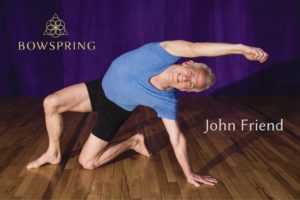
Silke: So maybe we can specify that with a little example. A student is looking for a solution to their back pain. Why would they be inspired to come to your Bowspring classes?
John: With the Bowspring, you’re able to move more lightly with greater agility; you have less joint pain; it takes away your back pain; it clears the pains throughout the body, and you also get more curvy, so you get a tapered waist line and you also develop more glutes. These curves are very attractive and actually support a pain free back. People like to look better and feel better. Those benefits are on the physical level. And then emotionally and mentally, the Bowspring practice increases your confidence and is empowering, so there is a great sense of well-being with the Bowspring.
Silke: People usually say, when they see your images, that you are hyperextending the lumbar spine. Is this an essential part of the Bowspring?
Desi: The curve in the lower back is the first thing people see because our eyes are not accustomed to seeing this curve so pronounced. But if we look a little bit deeper, we see that there are various curves (hips, lower back, ribcage or thoracic spine, neck…). If we look at it in two dimensions (2-D) we see a curvy line, but if we can see it in 3-D or higher dimensions, we see that it is actually a wave or a spiral which has the same effect as a spring.
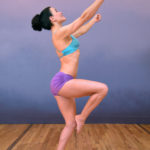
Desi Springer
By creating these waves we empower ourselves physically, mentally, emotionally.
In the standard model of alignment (which has influenced fitness, Pilates, yoga dance..etc..) there has been an idea that the bones are what supports the weight of the body. Unfortunately this is wrong! It’s a misunderstanding of ourselves at our base level.
“The bones do not hold up the body. The fascia does. The fascia creates and distinguishes a relationship between the bones.”
This curve you see in the lower back of the Bowspring aligns the fascia to be the most supportive in its connections above and below.
SILKE: I suppose, that this is where the name Bowspring originates?
DESI: The name is a mix of two things: an arch or “bow” and “spring” – an arching spring. The Bowspring is the best way to describe the curvy shape plus the springy fascial tonus that is necessary for our method to be effective and function as a medicine.
SILKE: This is what I don´t quite understand. As far as I know, Fascia gets activated when you stretch it, massage it or pressure it with a ball. How can you activate it with Bowspring?
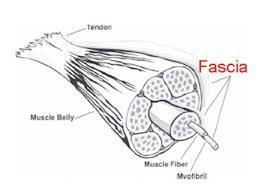 JOHN: Basically we activate the fascia in the Bowspring through isometric engagement. While moving and pulsing in the Bowspring there is a consistent hug, embrace, or squeeze of the fascia onto the bones and the core of the body. The directionality of fascia that we train in the Bowspring is not only that which provides the most spring, but also the least wear on the joints.
JOHN: Basically we activate the fascia in the Bowspring through isometric engagement. While moving and pulsing in the Bowspring there is a consistent hug, embrace, or squeeze of the fascia onto the bones and the core of the body. The directionality of fascia that we train in the Bowspring is not only that which provides the most spring, but also the least wear on the joints.

SILKE: You are also using jumps? Does this also engage the fascia?
JOHN: Yes, fascia tones when you jump and bounce but the directionality of the fascia matters! For not only getting the most spring, but for keeping the joints healthy while jumping. You get a natural springiness when you align with the Bowspring.
Silke: So how would you explain the difference between tone and contraction. I understand that contraction is a shortening of a muscle like the biceps when I bend my arm to lift something. How does this work with the fascia?
JOHN: In general, contraction is similar to tension. Tension of fascia is equivalent to fascial tone. You can still have tension in your body while you’re at a baseline level of rest in a static posture. A person can be at rest lying down and there will still be tension in the fascia and in the muscle. Scientists call this baseline tension level ‘pre-stressed’. For example: when a baby is born, there is already some tension, the limbs are pulled in contracted. This is a natural tension, a contraction, which is stabilizing and healthy. But most of the time, many people have unhealthy and imbalanced contraction of their myofascia around their joints where one side is much tighter than the other. Typically, people are too tight on the front and too loose on the back, which is an imbalance in myofascial tension that leads to a lot of long-term health problems.
INFO BOX FASCIA
Interesting Video about fascia (German with english subtitles)
The Fuzz-Speach. Video that shows and explains fascia. Be aware, that it is an anatomical video, which shows human corpses.
Bowspring Introduction Video with Desi and John.
SILKE: What changes did you note after practicing Bowspring for a while?
DESI: I consider myself a pretty shy person, an introvert. And if I didn’t have this practice, I don’t think I would have the confidence to speak publicly or to swim upstream against the status quo in alignment. It’s a pretty large stream we’re swimming up, so the Bowspring has afforded me not only empowerment on the physical level, but more so it has given me a deeper relationship to myself. My sense of self has expanded enough that I don’t feel fear to share my truth. I actually feel emboldened to offer this technique that is so radically new to many people worldwide.
Next to feeling more confident, I am also trusting myself more than ever.

Desi at a workshop
All the muscles of the back body and the posterior chain are also referenced as muscles of antigravity and muscles of self-confidence and trust.
So, by practicing the Bowspring and strengthening the muscles of my own back, I know that I have my own back and that I can trust myself. In trusting myself, I’m much more willing to stand before the world and offer from my heart with a desire to help other people even if what I have to say is controversial or counter to the mainstream thought.
Silke: So John, which changes did you note? I read that Desi was the one who brought the Bowspring concept to you, and you struggled in the beginning to accept it. What was the igniting spark, that finally made you join Desi?
John: The big opening for me was in my hips. I started to have chronic pain in my hip and lower back after practicing standard yoga alignment for many years.
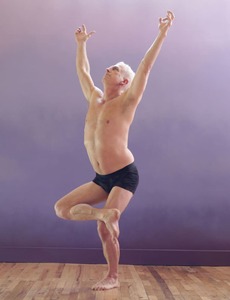
For years, I thought it was therapeutic to pull my glutes down and lengthen my lower back, but I still had chronic pain. Desi suggested that I start actively lifting my glutes while keeping the top of my thighs back, and then stretch in various poses.
My psoas deeply stretched in a whole new way. After that my chronic pain just went away. I was having an experience I knew was therapeutic but I didn’t know why. It was a difficult process of shifting alignment paradigms for me since I considered myself an alignment expert, especially in the field of therapeutics. It was hard for my ego to accept that the alignment I had been doing and had taught all over the world for many years as therapeutic was actually degenerative and a harmful direction in the long-term.
Once I realized that Desi’s alignment ideas were highly therapeutic, I began researching to understand the rational, scientific reasons for why it is effective.

Desi and I have been collaborating ever since on the development of the Bowspring method. We have a very good partnership because we offer different, but complementary talents and skills, through which we are able to help many people. It is deeply fulfilling for me to work with Desi in this way.
Silke: Yeah, you make a great team! Desi, would you generally say, that the Bowspring has some sort of feminist touch? With the curviness, which is opposed to straight lines? Especially nowadays with the debate, that was re-initiated by the #meetoo movement, I have the feeling, that we need more feminine, curved energy. What do you think about that?
Desi: The way we can consider it, within each of us, rather than associate the Bowspring to only women or men, we associate it to our innermost nature. If we think of the word ‘Nature’, our own environment, where we live like our planet — the Earth, the mother of all of us — there is a deep feminine aspect in each of us.
 Unfortunately, the women of this planet, young and old, have been oppressed, mistreated for millennia. The masculine patriarchy has dominated our feminine nature with its greed and aggressiveness for a long-time.
Unfortunately, the women of this planet, young and old, have been oppressed, mistreated for millennia. The masculine patriarchy has dominated our feminine nature with its greed and aggressiveness for a long-time.
The Bowspring is a vehicle, a tool, a map for self-discovery with the hope that when each person truly sees themselves, they will question their patterns and will choose not to keep going in the same harmful direction. We cannot keep destroying the environment; we can’t keep hurting each other; we can’t keep suppressing the feminine, the nature in all of us.
One of the most wonderful things that is happening in the US that we did not anticipate is that more and more men are practicing Bowspring. We have in our public classes, many times a 50/50 ratio between women and men. This is very exciting to me because the Bowspring asks us to sensitize and to become increasingly self-aware. It’s through this sensitizing and expanded self-awareness that I think that there is a chance for us to stop killing the animals, hurting each-other, suppressing the women, abusing the children and destroying our planet.
SILKE: The Bowspring method seems complex. What’s your answer if someone says: “that was so complicated”? How do you motivate people to keep going with the Bowspring practice?
JOHN: The Bowspring method has depth and complexity, but at the same time it is simple because the alignment formula or algorithm is the same for every pose and movement. However, it is not easy to practice since these alignments are often opposite to what we have been taught previously.

So, we tell everyone in the beginning that it’s going to take an orientation period of 1 – 2 months. We encourage new students to pay attention to their normal posture, not just in a classroom, but particularly at home and at work. There are simple alignment adjustments to their most common postures that they can make to feel immediate benefits.
As soon as a student can feel the progress in their Bowspring practice, it gets way easier to continue.
DESI: Our presentation is geared towards the experience level of our audience, so they feel that the method is not too complicated. One of the things most exciting and inspiring about the Bowspring, is that unlike any other fitness modalities, it is truly for anyone, which means that I could teach the Bowspring to my grandmother or a small child. We want to help people move around daily life with more ease and power for greater health.
“Once they receive the benefits of the Bowspring, it’s self-perpetuating. Once your eyes are open, you can’t close them again. Once you see, you can’t un-see. And once you’ve seen, you realize, whoa, I need to learn more about this new alignment method.”
Now that you tasted the benefits, you can’t go back and do things as if you were ignorant.
SILKE: Which sources inspired you in the development of the philosophy of the Bowspring method?
JOHN: The Bowspring method is influenced by both eastern and western philosophies. In the eastern philosophical traditions, we are most influenced by teachings from Zen, Taoism, Buddhist practices of mindfulness and compassion, Hindu Tantra, Ayurveda, and Bhakti Yoga. We are also influenced by western philosophies including the highest teachings within Gnostic Christianity, Sufism, and Kabbalah. The western teachings also include some of the great Enlightenment philosophers, and even some pagan and shamanistic wisdom.
Although our philosophical influences are eclectic, there is continuity and coherence in the principles. The various ideas from east and west are not contradictory. We ascribe to an east-west, global, universal, perennial philosophy that includes loving kindness, forgiveness, gratitude, truth, and harmony.
For the beginners, we talk about accountability first as foundational to our Bowspring philosophy. The student must become self-responsible for their own body. They can’t say that they are out of alignment only because of the fault of their mother or father or somebody else. They take personal accountability for their own body and mind.
Another basic philosophical focus of our method is mindfulness or self-awareness of our own patterns in our posture and our thinking.

We ask them to be fully present to what is true. How are you standing? How are feeling? What are you thinking? Don’t put a cover or a filter on it. Just look at it. Don’t judge it. Don’t be shameful. Don’t assign it a value of right or wrong. Then once you more clearly see your unconsciousness pattern, you have a chance to consciously change it.
We also emphasize discernment with compassion.Compassion is the ground of discernment and critical thinking in our philosophy, because it gives us patience to go on in a process that is not very comfortable in the beginning. We cultivate the sensitive awareness and compassion to know that we have limitations. We realize that we have problems that are hereditary, yet deep patterns can still be improved.

We have compassion for ourselves and the earth when we see the interconnectedness. We see that there is real suffering in the world.
If someone follows the specific steps of the Bowspring formula / algorithm, we can predict with high probability that they will have improvement in their body, mind and heart. Our philosophy also incorporates science into more metaphysical ideas to create a very healthy, pragmatic viewpoint.
Silke – So you would say that you have a three-fold path – accountability, mindfulness and compassion?
John: “Yes! Accountability, from the deepest part of your heart: you want to be true. Mindfulness keeps you clear to know what is true. And in your body, you are more sensitive, you feel more, and are more compassionate to what is real. So, heart- mind-body, accountability, mindfulness and compassion are virtues to cultivate for everybody.”
Silke: Desi, you conceived the original concept of the Bowspring. What inspired you?
Desi: So, you know how in life when you’re walking along and you get a message from the universe? Whether you find a feather seemingly in the middle-of-nowhere, or you accidentally run into someone on the street, we will wonder if there is a deeper meaning.
Some messages come to us in the form of lessons. For me, so many lessons came all at the same time and all pointed in the same direction toward the Bowspring, although I didn’t have a name for it at that time. If I wouldn’t have listened, I would have been completely foolish.
At the time, I had been teaching MPY (modern postural yoga) for 14 years and had been a part of John’s community, Anusara and studying under him for 7 years. His community was at war and asking him to leave the community and telling him that he was no longer welcome to teach because he had a private consensual affair with a student. I didn’t agree with their thinking. I knew that if the community was going north and John was going south, that I would follow him to the south rather than go with a community that was so judgmental and righteously, religiously punishing him.
I needed to ask myself, how do I wish to move forward for me? I was always the most curvy student in yoga classes, and the person who was considered “misaligned” and couldn’t practice correctly because I couldn’t make myself completely straight. So, I decided if John is going to free himself from attachment to past alignment systems, I was going to free myself too. I went with John.
At the same time, I was dating an NBA basketball player – an Olympic gold medalist.

When I looked at his body, I realized that it was very curvy and his glutes mounded upwards. Yet, in modern postural yoga, we were always encouraged to move our glutes downwards. So, I asked him, what do you think about moving your glutes downwards? He said:
“Why would you ever do a thing like that? You take away your power if you do that. Your glutes are an engine for moving and jumping. They have to go up. “
From that day onwards, I knew that I wanted to be more like him than the linear, flexible, stretchy person who could put a leg behind their head. I wanted to be powerful and I wanted to embrace my curves as they are natural.
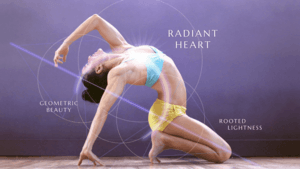
When I started to practice in that way I felt lighter and stronger, and I was able to do more than ever. So, I stopped trying to become something that I was definitely not.
Silke: What is most challenging about being different or introducing something new? What obstacles do you see yourself confronted with?
John: Almost every time it is one of three reasons, that people are challenged to learn the Bowspring or accept it. One of them is, if they start to practice, they can feel emotional discomfort. They might feel vulnerable and resist. It may not have a particular relationship to a memory or specific past event, but it just feels unpleasant. Second is, that they have an idea of what is correct. And this is the standard model. So once people, especially yoga teachers, realize that the Bowspring ideas are opposite to what they have been taught and what they believe to be true, they fight the new ideas. They say this can’t be right, this is incorrect.
Then thirdly, in an elemental Bowspring class, we teach very simple things. But due to the special alignment, they can still be challenging. You ask somebody to do simple things like walking and they can’t do it and they get frustrated and feel incompetent. They don’t want to feel incompetent doing simple things…so there can be difficulty and challenge in learning the Bowspring method in the beginning.

Additionally, people still judge me, because I had a scandal, which, in my opinion, is my private life. But a lot of people don´t trust me anymore. If I say something now, they don’t believe me, doesn’t matter what it is. In my opinion a community has to be compassionate, forgiving. Instead of kicking me out, they could have said, ‘OK, you made a mistake, now improve!’ If there is no chance for improvement, that is the purpose of a community?
Everybody has the desire to grow. You need to give the opportunity to grow.
We have faced and still face many obstacles with presenting this method to the world.
Desi: Many times when you introduce something completely new to an self-proclaimed expert in a particular field, they are too attached to their established paradigm to become a beginner again
Silke: I can understand that a little bit because if you teach Yoga and suddenly everything you considered right, suddenly is wrong…It isn´t easy. I have problems telling my students to tuck the tailbone in. Doesn´t feel right anymore.

John: Nobody wants to start from scratch or to start over again. If you have invested a lot of time and money in a particular paradigm, it is a painful process to let of the old and open up to learn a new model, a new technology from the beginning.
Silke: You systemized the Bowspring method over the last two years, so what is the next step? Where do you see yourself in the next 5 years?
John: Our next step is deepening and expanding a curriculum that can be for all people. We want to make the fundamentals easier and less complicated so the method can be applied for fitness and athletics, therapy, and for our immune system and overall health. There are so many applications of the Bowspring. Our future is very exciting.
Desi: We would like to empower people who are brave enough and open-minded enough to share the Bowspring so that the method can grow. We recognize that the impact of the method is so much bigger than either one of us.

The method is so precise, it takes and demands a specific application and presentation. Through trial and error, this is what we have come to realize over the last 5 years of touring to 17 different countries. It’s been an adventure, a wild ride that neither one of us anticipated. Now it’s time to extend and expand that offering out to so that more and more Bowspringers can share this method around the world to help as many people as possible.
Silke: That is a perfect ending! Would you like to add something or did I forget to ask something?
John: No, we will do it next time, when we see each other. Thank you so much, Silke.
Desi: Thank you!
Silke: Thank you! It was a pleasure!

If you wanna know more about the Bowspring method please visit the Global Bowspring Website or practise Bowspring with Desi and John on Tint Yoga
Don`t miss out on my monthly article about Bowspring! Register for my newsletter and get in-depth info about Bowspring and related topics. (And please, check your Spam Folder. The confirmation mail mostly ends up there :)).
Photo Credits:
www.globalbowspring.com
http://www.vitalbowspring.com
www.unsplash.com (Simeon Jacobson, Annie Spratt,
Share this post: on Twitter on Facebook on Google+


0 Comments